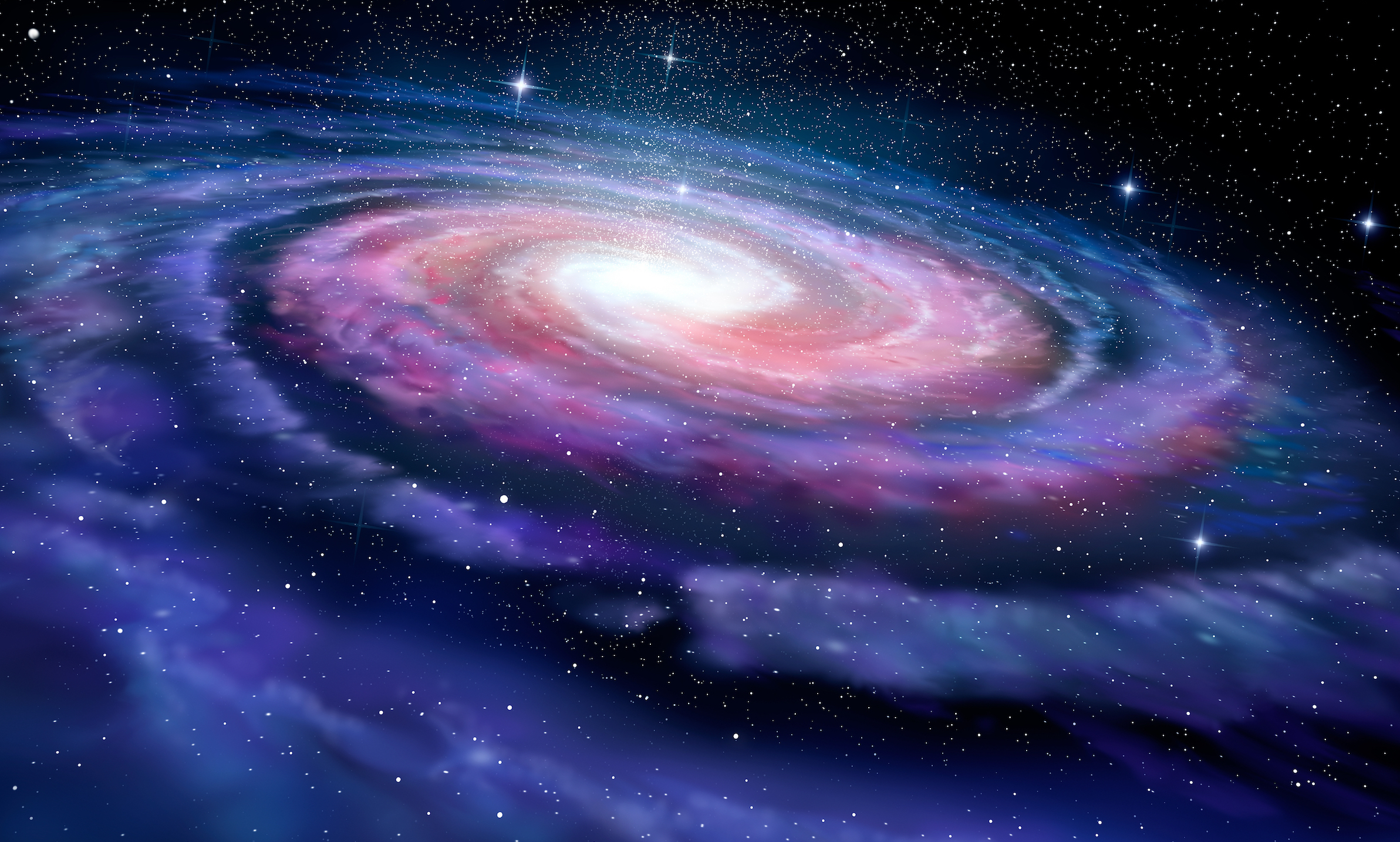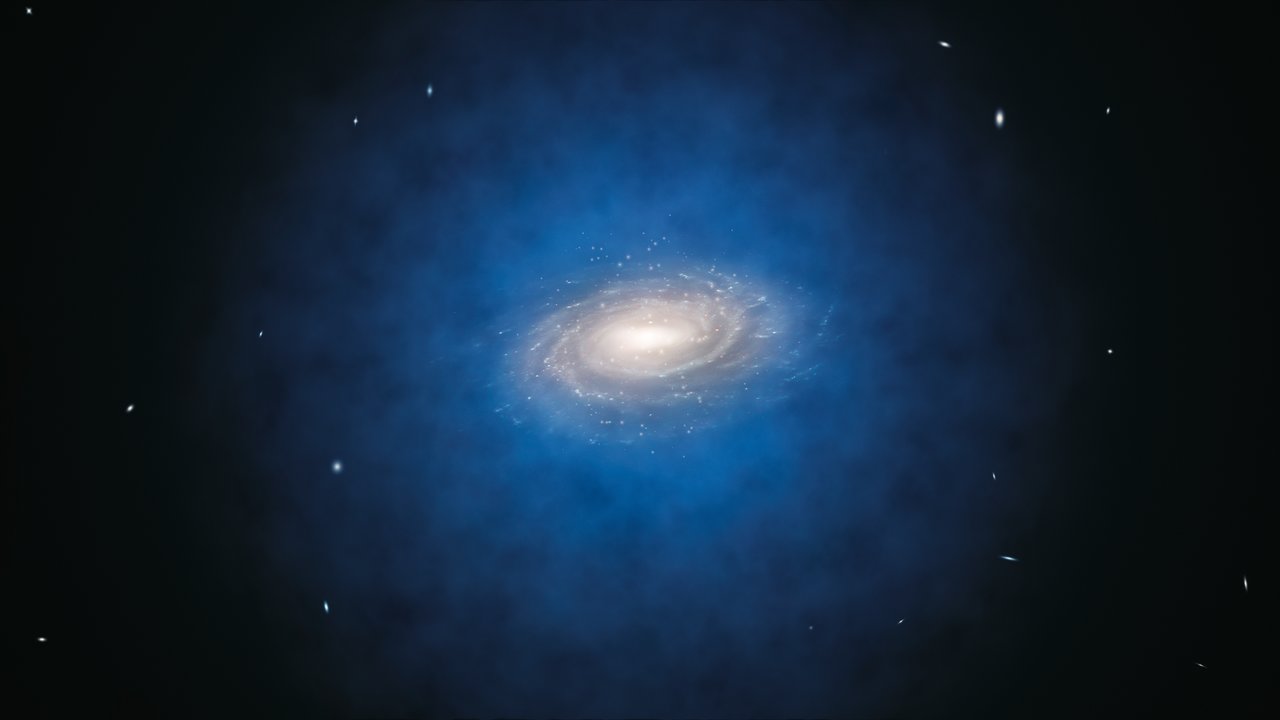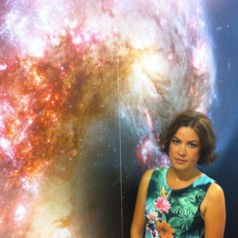
Physicists search for imprints left by dark matter haloes as they swoosh through galactic gas

The search for dark matter – an unknown and invisible substance thought to make up the vast majority of matter in the universe – is at a crossroads. Although it was proposed nearly 70 years ago and has been searched for intensely - with large particle colliders, detectors deep underground and even instruments in space – it is still nowhere to be found.
But astronomers have promised to leave "no stone unturned" and have started to cast their net wider out into the galaxy. The idea is to extract information from astrophysical objects that may have witnessed chunks of it as they were passing by. We have just proposed a new method of doing so by tracing galactic gas – and it may help tell us what it’s actually made of.
Physicists believe that dark matter has a propensity to structure itself into a hierarchy of haloes and subhaloes, via gravity. The masses of these clumps fall on a spectrum, with lower mass ones expected to be more numerous. Is there a limit to how light they could be? It depends on the nature of the dark matter particles.
Warm versus cold
Dark matter cannot be seen directly. We know it exists because we can see the gravitational effects it has on surrounding matter. There are different theories about what dark matter may actually be. The standard model suggests it is cold, meaning it moves very slowly and only interacts with other matter through the force of gravity. This would be consistent with it being made up of particles known as axions or WIMPS. Another theory, however, suggests it is warm, meaning it moves at higher speeds. One such particle candidate is the sterile neutrino.

If dark matter is cold, a Milky Way-type galaxy could harbour one or two subhaloes weighing as much as 1010 Suns, and most likely hundreds with masses of around 108 Suns. If dark matter is warm, haloes lighter than around 108 Suns cannot form easily. So tallying light mass dark haloes can tell us something about the nature of dark matter.
Halo imprints
We believe that the existence of lower mass haloes can be revealed by carefully planned observations. Astronomers have already got pretty good at this game of hide and seek with dark matter haloes and have devised observations to pick up the damage they leave behind.
To date, observations have targeted mostly the changes in the distribution of stars in the Milky Way. For example, the Large Magellanic Cloud, a smaller galaxy orbiting ours, seems to have a dark matter halo which is massive enough to trigger an enormous wake – driving the stars from across vast regions to move in unison.
Sign up for the Live Science daily newsletter now
Get the world’s most fascinating discoveries delivered straight to your inbox.
A few of the smaller dark matter haloes thought to be whizzing inside the Milky Way may occasionally pierce through large stellar features, such as globular clusters (spherical collection of stars), leaving tell-tale gaps in them. Dark matter haloes can also affect how light bends around astrophysical objects in a process called gravitational lensing.
But the signals left in the stellar distributions are weak and prone to confusion with the stars’ own motions. Another way to probe the effect of haloes is by looking at the galactic gas it affects. Galaxies have plenty of hot gas (with a temperature of around 106 degrees Kelvin) which extends out to their edge, providing a wide net for catching these dark matter haloes.
Using a combination of analytical calculations and computer simulations, we have shown that dark haloes heavier than 108 solar masses can compress the hot gas through which they are moving. These will create local spikes in the density of the gas, which can be picked up by X-ray telescopes. These are predicted to be minute, of the order of a few per cent, but they will be within the reach of the upcoming Lynx and Athena telescopes.
Our models also predict that the spikes in the density of the cooler galactic gas (with temperature of around 105 K) will be even more significant. This means that the cooler gas can record the passage of dark matter haloes even more sensitively than the hot gas.
Another promising way of observing the dark-matter-induced fluctuations in the gas is via the photons (light particles) from the cosmic microwave background – the light left over from the Big Bang. This light scatters off the highly energetic electrons in the hot gas in a way that we can detect, providing a complementary approach to the other studies.
Over the next few years, this new method can be used to test models of dark matter. Regardless of whether dark matter haloes below 108 solar masses are found in the numbers predicted or not, we will learn something useful. If the numbers match up, the standard cosmological model would have passed an important test. If they are missing, or are far fewer than expected, the standard model would be ruled out and we’ll have to find a more viable alternative.
Dark matter remains a mystery, but there’s a huge amount of work going into solving it. Whether the answer will come from instruments on Earth or astrophysical probes, it will no doubt be one of the most important discoveries of the century.
This article is republished from The Conversation under a Creative Commons license. Read the original article.
Follow all of the Expert Voices issues and debates — and become part of the discussion — on Facebook and Twitter. The views expressed are those of the author and do not necessarily reflect the views of the publisher. This version of the article was originally published on Live Science.
Andreea Font is a theoretical cosmologist and reader in Theoretical Astrophysics at Liverpool John Moores University. Andrea’s interests are in the formation and evolution of galaxies, in particular in the formation of the Milky Way. To this aim, Andrea builds computer simulations that follow the evolution of Milky Way-type galaxies since their birth until the present time. Andrea also has an interest in deciphering the nature of dark matter and currently works on how we can distinguish between various possible dark matter models by using the chemical and kinematical signatures of stars in the Milky Way.










